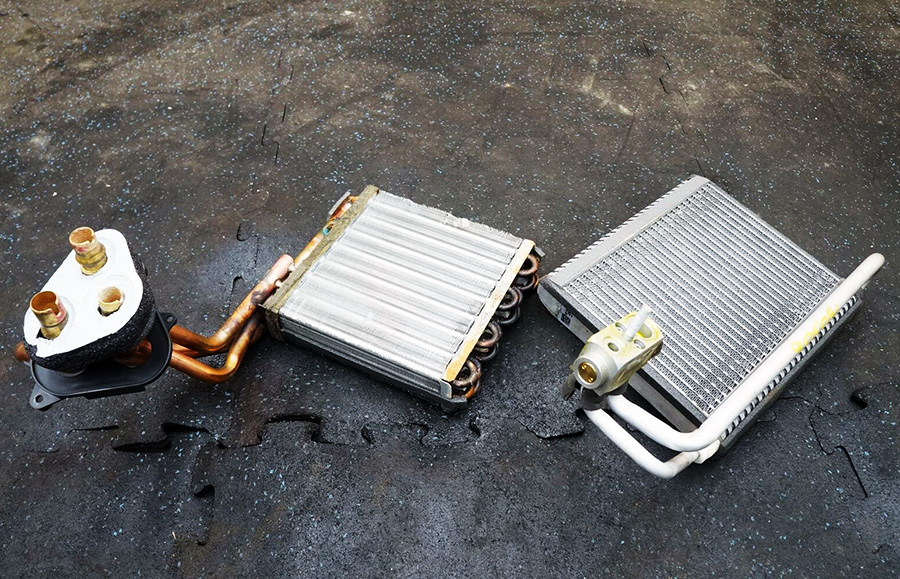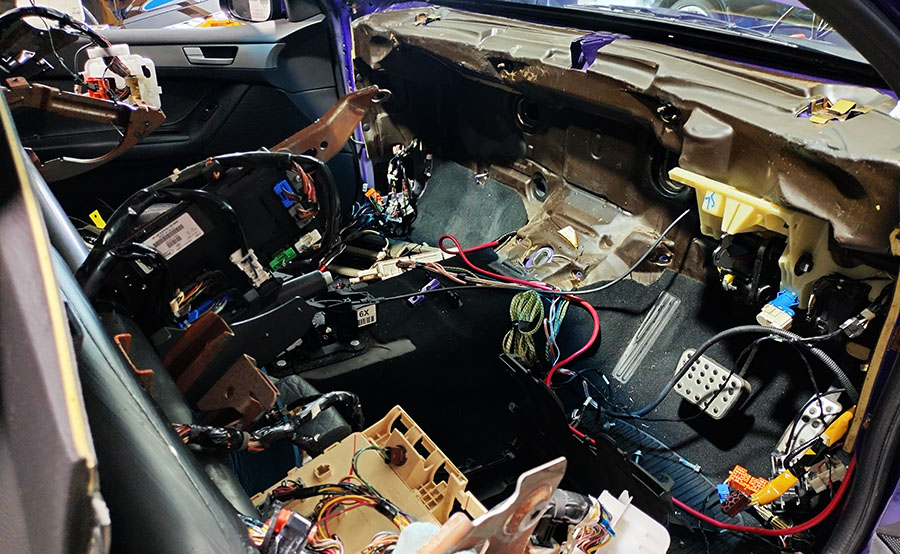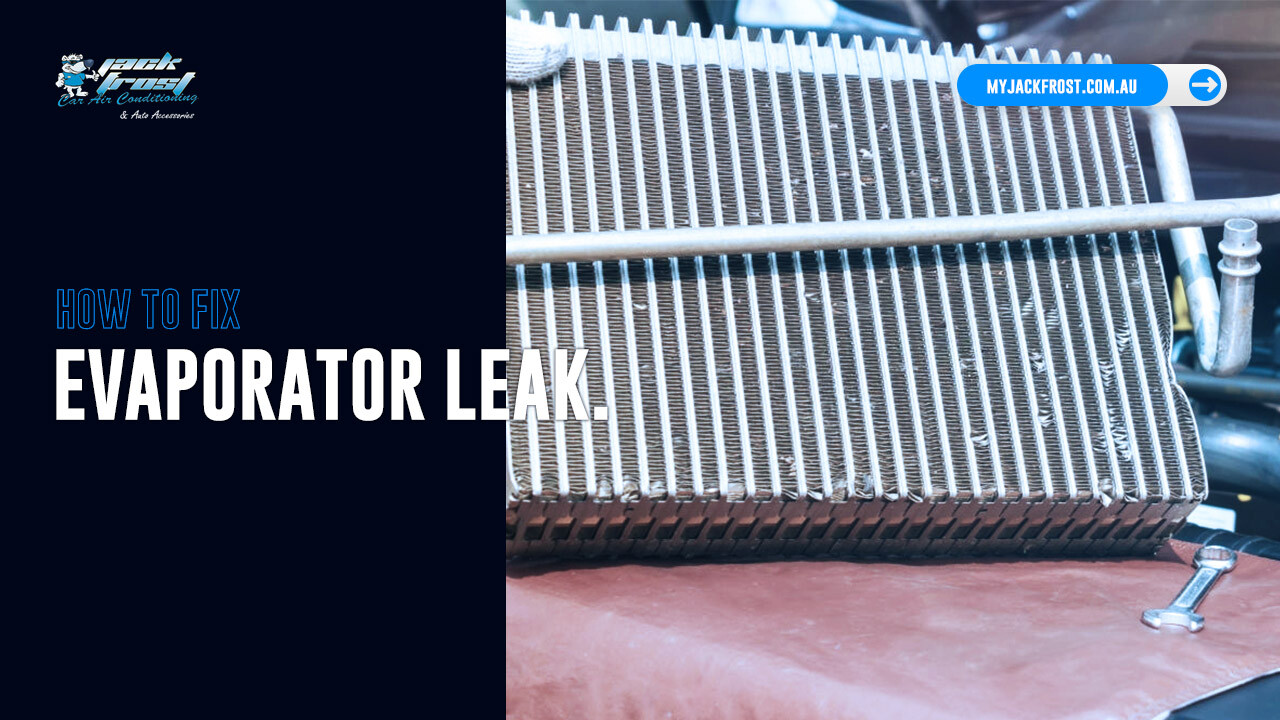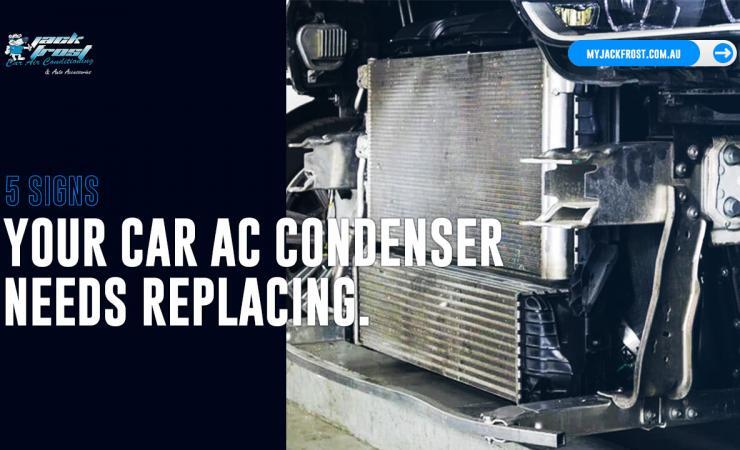What is An Automotive AC Evaporator?
Your car air conditioning AC evaporator is a heat exchanger that resembles the condenser but is much smaller. They are generally of the tube and fin design. The evaporator, also sometimes referred to as the evaporator core, is one of the two (maybe three) heat exchangers in a mobile A/C system. In a typical passenger car or pickup truck, the evaporator is usually located inside the passenger compartment, quite often deeply buried in or under the instrument panel.
Some vehicles, usually vans or SUVs, have two evaporators; one under the instrument panel, or elsewhere at the front of the vehicle, and another one located in or toward the rear of the vehicle. The rear evaporator is often located behind a side panel or in the ceiling above the rear passengers.
Table of Contents
How does an auto ac evaporator work?
The car AC evaporator works by absorbing heat from the passenger compartment and removing moisture from the air. The evaporator is located inside the vehicle and is connected to the refrigerant line from the AC compressor.
The refrigerant enters the evaporator as a hot, high-pressure gas and then evaporates into a cool, low-pressure gas, absorbing heat from the surrounding air in the process.
The cooled, low-pressure refrigerant is then returned to the compressor to start the cycle over again. This process continues until the desired temperature inside the vehicle is reached and maintained.
If you want a more in-depth understanding of your ac/system read our article on how your car air conditioning works.

Comparing the A/C Evaporator to the Heater Core
The car AC evaporator and the heater core serve different purposes in a vehicle’s climate control system. In short, the AC evaporator cools the air, while the heater core warms the air.
AC Evaporator
The AC evaporator is part of the air conditioning system and its primary function is to cool the air inside the vehicle. The refrigerant from the AC compressor flows through the evaporator, where it releases heat and cools down. The cooled air is then circulated into the cabin to provide comfort to the occupants.
Heater Core
The heater core is part of the heating system and its primary function is to warm up the air inside the vehicle. The heater core is a small radiator that is heated by hot coolant from the engine. As the coolant flows through the heater core, it releases heat, warming the air that is then circulated into the cabin.
What are the main causes of an A/C Evaporator failure?
The failure of a vehicle’s AC evaporator can stem from various causes, including leaks, internal damage, and faulty AC components. The following are considered to be the primary reasons for evaporator failure.
- Clogging:
Over time, the AC evaporator core can become clogged with debris, such as leaves, dust, or mold. This can restrict airflow and cause the evaporator to fail. - Leaks:
Leaks in the refrigerant line can cause the refrigerant to escape and cause the evaporator core to fail. - Corrosion:
Exposure to moisture and other elements can cause the evaporator core to corrode and fail. - Age and Wear:
Over time, the AC evaporator core may wear out and fail due to normal wear and tear. - Electrical Issues:
Electrical issues, such as short circuits or failed fan motors, can cause the evaporator core to fail. - Road debris
The evaporator fins are also susceptible to clogging from leaves or hair from pets and other outside road debris.
It is important to regularly have the AC system inspected by a professional to detect and prevent any issues before they lead to a complete evaporator core failure.
The only true permanent fix for a leaking evaporator core is the replacement of the component.
How to Fix an AC Evaporator Leak?
Fixing an AC evaporator leak in a car typically requires the help of a professional technician. The evaporator is located inside the car’s HVAC system, and accessing it can be complex. Unless you’re a qualified car air conditioning technician attempting it yourself will most defiantly end up in disaster.
Here are some key reasons why it is better to consult an expert rather than attempt to fix an AC evaporator leak in your car yourself:
- The complexity of the repair:
Fixing an AC evaporator leak involves accessing the evaporator, which is typically located deep within the HVAC system behind the dashboard. Disassembling the dashboard and gaining access to the evaporator can be complex and challenging. Without the necessary knowledge and experience, you may inadvertently damage other components or fail to properly reassemble the system. - Specialized tools and equipment:
Repairing an AC evaporator leak requires specialized tools and equipment such as manifold gauge sets, vacuum pumps, and refrigerant leak detectors. These tools are not commonly found in a typical household toolkit. Automotive technicians have access to these specialized tools and are trained in their proper use. - Handling refrigerants safely:
Automotive AC systems use refrigerants, which are regulated substances and require careful handling. Releasing refrigerants into the atmosphere is harmful to the environment. Professionals are trained in the proper handling, recovery, and disposal of refrigerants to ensure compliance with environmental regulations. - Accurate diagnosis:
While you may be able to identify a visible leak or low refrigerant levels, determining the exact location and cause of the leak requires expertise. Technicians have the knowledge and experience to diagnose AC system issues accurately, including identifying the specific component causing the leak. - Warranty and expertise:
Attempting to repair the AC evaporator yourself may void any existing warranties on your car’s AC system. Additionally, professional technicians have the expertise and experience to diagnose and address any other underlying issues in the system. They can ensure a comprehensive repair and minimize the risk of further problems down the line. - Safety considerations:
Working on the AC system involves potentially hazardous situations. For instance, refrigerant leaks can be harmful if inhaled or come into contact with the skin or eyes. Professionals are trained in the necessary safety protocols to minimize risks and ensure a safe working environment.

Evaporator Replacement & installation
Properly evacuate the a/c system making sure there are no positive pressure readings on gauges before doing any repair to the ac system. The procedure for removal and replacement of the evaporator core is different for every car make, model, and year. In most cases, the removal of the entire dashboard is needed to get access to the HVAC evaporator case.
To remove and install a car AC evaporator, the following steps should be followed:
Removing the Evaporator:
- Disconnect the battery: To prevent electrical damage, disconnect the battery before starting the repair.
- Locate the evaporator: The evaporator is located under the dashboard and is typically located near the firewall.
- Disconnect the refrigerant lines: Detach the refrigerant lines that connect the evaporator to the AC system. You may need to use a wrench to loosen the connections.
- Remove the evaporator: Once the refrigerant lines are disconnected, remove the evaporator by unscrewing it from its mounting location.
Installing the Evaporator:
- Clean the mounting location: Clean the location where the evaporator will be mounted to ensure a secure fit.
- Mount the evaporator: Secure the evaporator in its original location, making sure to tighten the screws tightly.
- Connect the refrigerant lines: Reattach the refrigerant lines to the evaporator and tighten the connections.
- Test the AC system: Turn on the AC system and check for proper operation. If everything is working correctly, the system should start cooling the air.
Cost of a Car AC Evaporator Replacement Service?
The cost of a car AC evaporator replacement service can vary depending on several factors, including the make and model of the vehicle, the location of the service, and the labor rate of the technician. On average, the cost of an AC evaporator replacement can range from $1000 to $3000, with luxury vehicles often costing more.
Additionally, the cost can also be affected by the complexity of the repair and the cost of the evaporator itself. It is recommended to get a quote from a trusted car air conditioning specialist like Jack Frost for an accurate estimate of the cost of the service.
When considering a repair to your vehicle’s AC system, it is advisable to seek the services of a specialized car air conditioning repair provider, as opposed to a general auto repair workshop. The replacement of an AC evaporator often requires the removal of the dashboard, and it is crucial to ensure that the task is performed by a specialist with the necessary expertise to guarantee a successful outcome.
Conclusion
The car AC evaporator plays a crucial role in ensuring that the air conditioning system works effectively and efficiently. Understanding the basic functions of the evaporator and the common causes of its failure can help you maintain and repair the system when necessary. If you experience issues with your car’s AC system, it is advisable to seek the services of a specialized car air conditioning repair provider to ensure that the job is done correctly.
While the cost of an AC evaporator replacement can vary, it is essential to remember that investing in proper maintenance and repairs can help extend the life of the system and keep you comfortable on the road.





Hi
I’ve got a 2012 VW Jetta, which has an air-conditioner that often makes strange sounds – a bit like a low mooing – especially in low gear or at the lights. Any idea what the issue could be and how much it would cost to fix or for you to take a look at it?
It really only started after having the car serviced some months back.
Thanks
Broken AC is one of the most frustrating situations that almost every operative experience. It happens especially during the hot summer days. The vehicle’s air conditioning system is designed to remove heat from the air. The evaporator plays a key role in harnessing the cold refrigerant in its liquid state. Certain warning signs are there. You need to be aware of the warning signs to spot and fix the issue timely. In my opinion, you need to service your vehicle’s air conditioning system on a regular basis.
I have a quick question for you. I heard vertical tank air compressors are better than horizontal tank compressors. Is that true? From what I’ve been told the vertical tanks can hold more air. Thank you in advance for your answer.